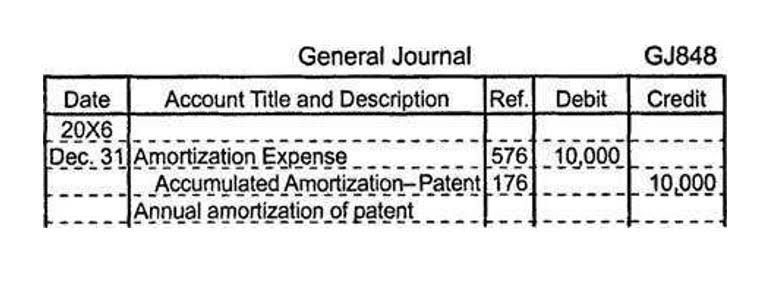
The family office software and technology sector was no exception, and the industry has mirrored the patterns of growth and expansion driven by AI in other areas. According to Simple’s latest research an estimated 80% of technology providers already using AI or working on a plan to deploy it in their products and services. Many of them are specifically looking at how they can use it to directly respond to the ever-changing needs of their customers. Financial management software can easily be restricted to operate with strict compliance with local tax regulations using user-defined parameters. They also come packaged with customisable reporting tools that can help detect anomalies and mitigate fraud to a large extent.
- Designed to deliver comprehensive insight into your client’s total net worth, the Archway Platform allows family offices to track traditional holdings like equity, bonds and cash as well as hedge funds, private equity and personal assets.
- The Eton Solutions AtlasFive™ software platform and optional supplemental services enable MFOs to efficiently execute transactional services and at lower costs thereby increasing profitability.
- The first step in utilizing accounting software in your family office is to understand its importance.
- As technology continues to drive innovation, new investment avenues are becoming popular among family offices, like foreign currency hedging, cryptocurrency, and other digital assets.
Functionality, benefits and uses are covered, offering comprehensive insights into who needs what, where and when. It’s helpful to work with trusted advisers and specialist firms when choosing accounting software. Ultimately, the goal is to make your family office the central hub for service providers, ensuring that technology enhances efficiency and decision-making processes.
AssetMax
Full event-based partnership accounting, supporting lot-level multi-currency, multi-ledger charts of accounts, including across multiple jurisdictions. We’ve designed a multifaceted data security program that ensures the confidentiality and integrity of data managed on our platform. Flexible reporting capabilities give you the power to quickly create customized reports that update in real time. Allvue’s industry-leading solutions can help your business break down barriers to information, clear a path to success, and reach new heights in alternative investments. Our team is made up of enterprise technologists, data scientists, designers, futurists, business builders and former financial advisors.
Cyndx is an advanced technology platform that provides growing companies, investors, and financial institutions access to a broad spectrum of curated data to enhance capital raising, M&A transactions, and other business opportunities. IQ-EQ provides an end-to-end bespoke portfolio monitoring solution to institutional and private wealth investors focusing on alternative and luxury assets. Aleta provides a truly holistic overview of the family wealth and unlocks valuable insights to elevate your wealth strategy. The Swimbird Platform SWIP is a modern portfolio management solution, which gives the client a holistic view of their total portfolio – everything in one place. PandaConnect is a global full-scale investment administration solution servicing clients around the world covering all asset classes both bankable and non-bankable investments.
The Evolution Of Family Office Accounting – And The Innovative Service Providers Leading The Charge
As an independent reporting advisor, we deliver state-of-the-art consolidated financial reporting with data you can trust as a strong basis for your financial decisions. Intuitive, digital investment admin that tracks data from all private investments in a single platform. Discerning families and family offices use Nines as a centralized household manual and operating system to simplify managing properties, assets, vendors, staff, projects, and more. As an independent reporting advisor, Mirador delives state-of-the-art consolidated financial reporting with data you can trust as a strong basis for your financial decisions. To execute a successful technology rollout in any family office, there has to be forward-planning, with clear objectives and required outcomes. This guide lays out how to get started with implementing family office technology to start improving your processes, promoting productivity, and saving time now.

See how you can manage fund and investor allocations in a single solution and automate transactions that occur over the lifecycle of a fund. Learn how Allvue helps emerging venture capital and private equity funds supercharge their growth with accounting, reporting, and investor communication solutions. Switzerland-based Tindeco lets clients design and implement rule-based investment strategies flexibly to create performance, hedge and allocate risks and manage workflows.
Find the top family office consolidated reporting software here
The ability to automate transaction processing not only saves on resources, like payroll, but also gives your family office the opportunity to strategically plan for organizational growth. Ensuring the safety and continuity of your family office’s operations during uncertain times is of utmost importance. Our latest guide highlights the importance of a comprehensive business continuity plan, detailing significant elements to ensure you safeguard your wealth and protect your legacy. Trusted CFO Solutions is an advisory and accounting solutions firm with a proven track record of helping clients create. Build a higher-performing, lower-cost financial team that takes advantage of the best financial management software on the market. Family offices want a seamless user experience to improve operational efficiency and with more exposure through the media and peer-to-peer networks, the awareness of solutions is growing.
Sage allows you to use all of your existing and new systems in one place so that you can keep everything in sync. For example, you can pair your propeller industries competitors revenue alternatives and pricing with detailed expense management or payroll tools. A family office is defined as a privately held company responsible for investment wealth management for a family. In some cases, the office could handle assets for multiple families, but they typically have an ultra-high net worth, which means their assets are well over $100 million.
Our one-stop solution streamlines family office operations, eliminating the inconvenience and inefficiencies of juggling multiple software products. Award-winning family office software enabling improved accuracy, optimized processes, and reduced risk so you can focus on what matters most – providing more value and deepening client relationships. Family office accounting software built to completely support the back office, combining detailed financial statement reporting, a true general ledger, cash management and workflow standards. IPaladin’s Digital Family Office is a USA-based blockchain platform designed for family office professionals to orchestrate people, services, documents and activity. Family offices are able to save time, money and stress through a birds eye view platform that allows them to track past, understand present and anticipate future.
Family office archetypes and software use cases
Crestbridge recognises that each family office is different, with its own unique needs and characteristics. FutureVault is a digital vault and secure document exchange solution helping institutions and firms digitise their business, transform document handling, and improve the digital client experience. IPaladin’s Digital Family Office is a blockchain platform to orchestrate people, services, documents and activity, as one source of truth, for the modern family office.
Several mid-market accounting firms such as EisnerAmper, Marks Paneth, Anchin, UHY, have been making strong plays into fintech-powered service offerings. Automate data flow to and from LemonEdge with any other system or data source with our comprehensive encrypted API toolkit. Avoiding the re-keying of data creates an efficient, effective, automated single source of truth across your data model for complex multi-generational family office operations. In this three-minute demo, Solutions Engineer Sean Houser shows how Allvue can help simplify fund accounting processes.
Through their platform, they facilitate time-saving analysis, collaboration and the structuring and centralization of data for investors, consultants and fund managers. The Swiss all-in-one Wealth & Asset Management solution with an integrated portfolio management system including 200+ custodian automatic feeds for multi-asset consolidated reporting. SS&C Family Office Services eliminates cost, risk and time of integrating disparate systems, delivering solutions to single and multi-family offices for their complex needs. In 2023, the tech industry picked up pace, propelled by widespread integration of connected technologies and the rise of AI as the next major tech intervention after the internet.
While outsourcing can be effective, there is a better way to keep full control over your accounting services and still save money and time. By leveraging the right family office accounting software, offices can streamline their complex financial processes and retain complete oversight over their financial data with minimal to no IT intervention. Traditionally, legacy solutions like QuickBooks or spreadsheets were the platform of choice, particularly for founder-led family offices. However, as a family office scales – and the industry with it – these methods simply aren’t as effective in handling the multi-entity accounting environment that modern family offices operate in. India’s Valuefy offers a digital platform that features accounting, consolidated reporting, CRM, portfolio and risk management, and other solutions.


